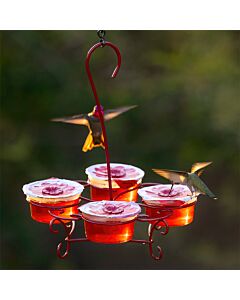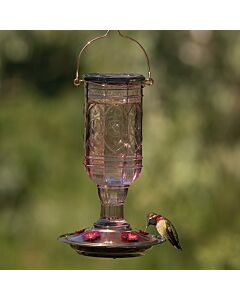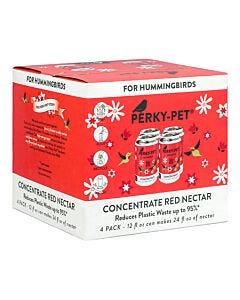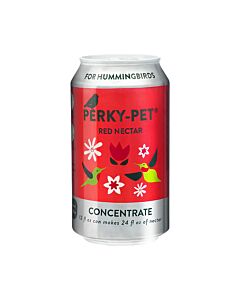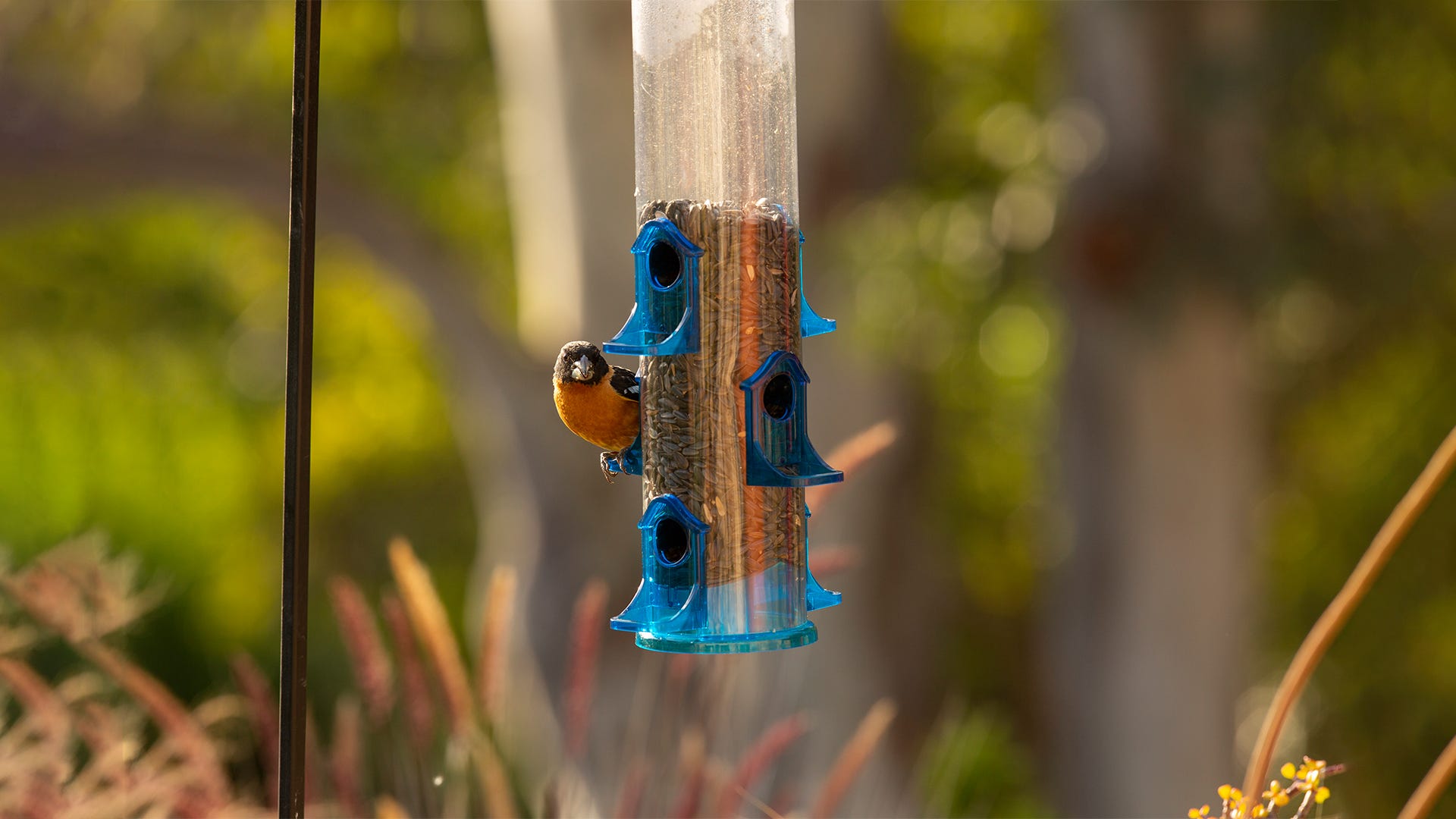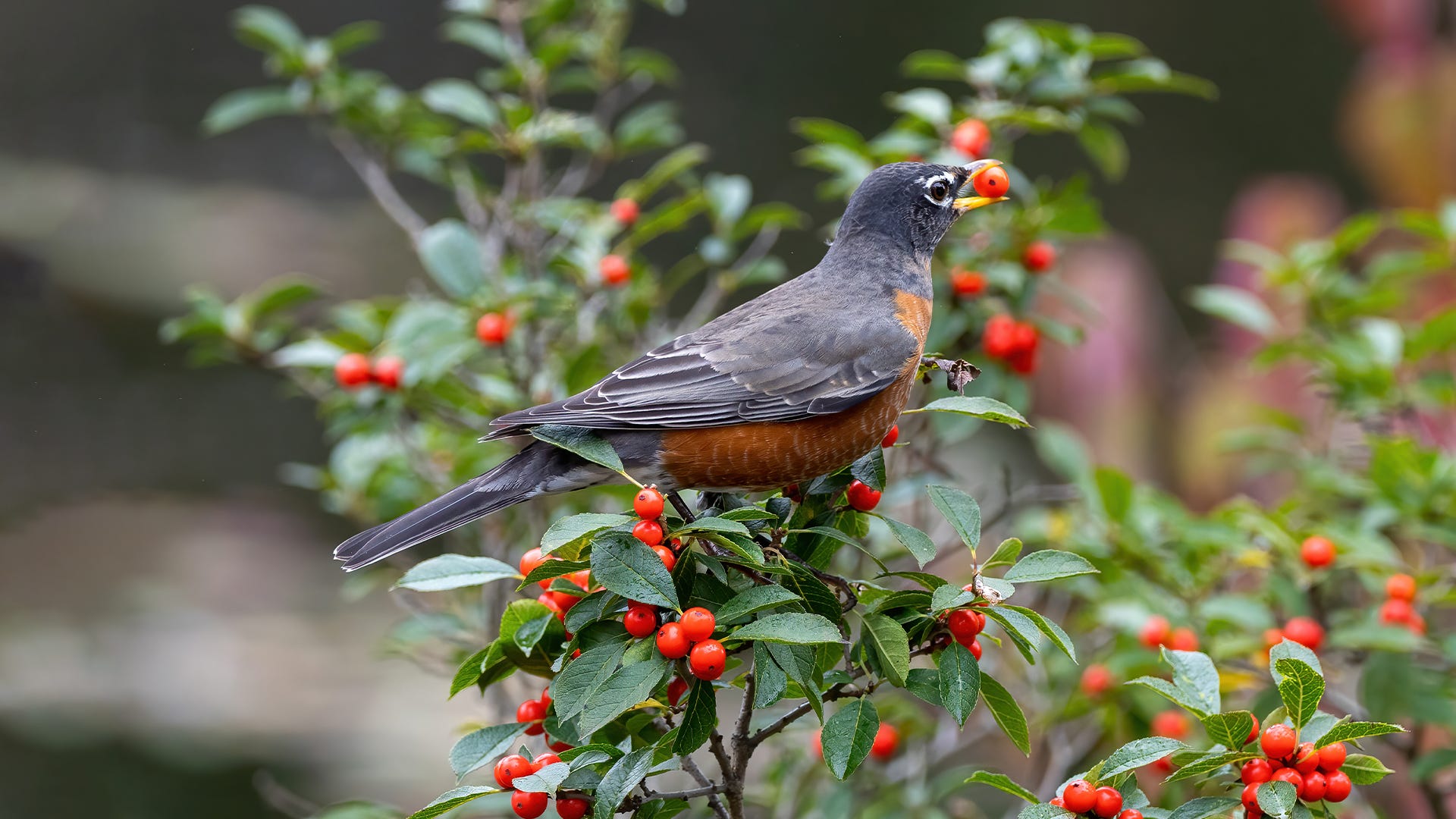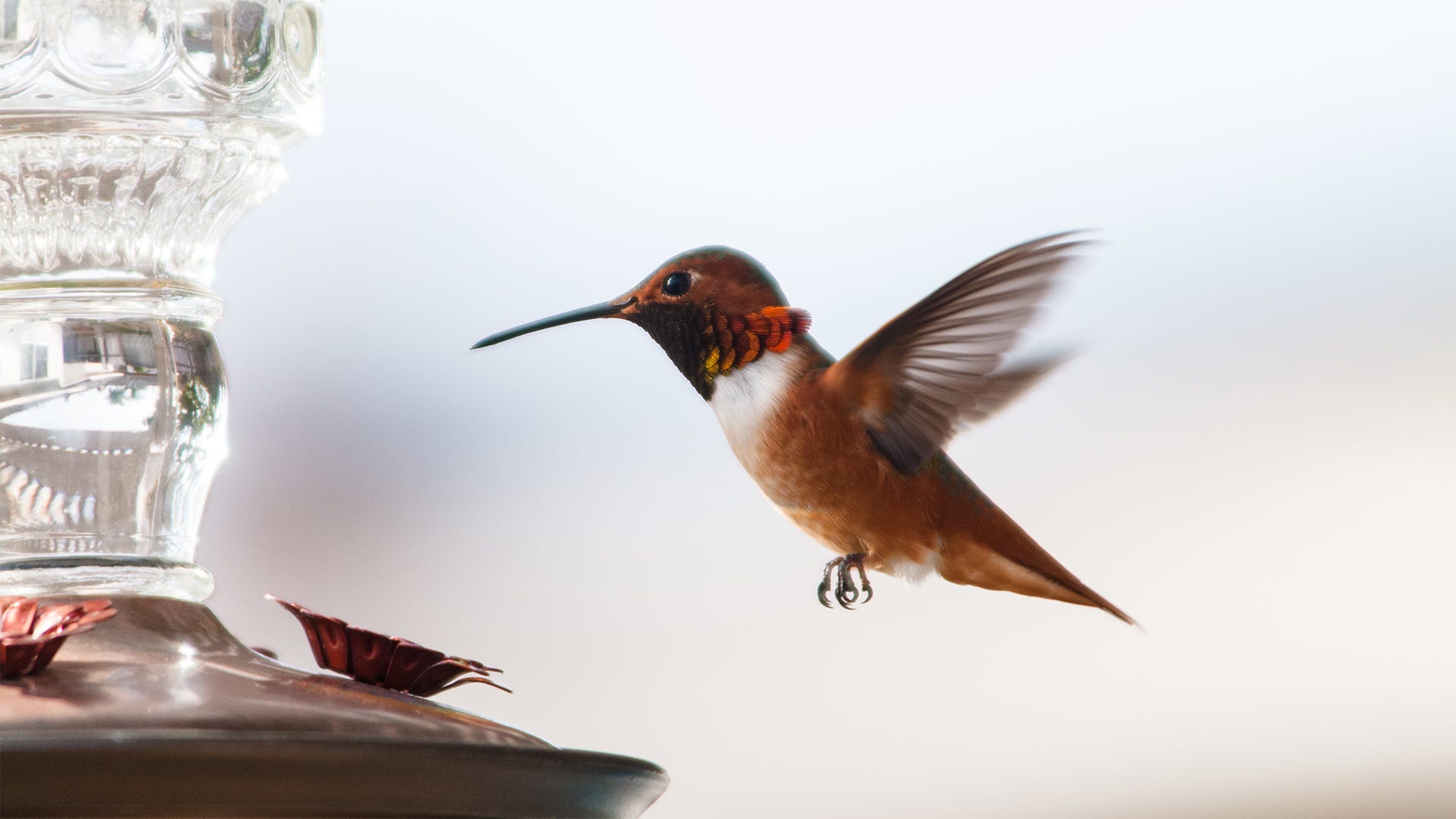
You’ve purchased a Perky-PetⓇ Hummingbird Feeder. You’ve mixed their sugary treat and you’re ready to open your very own “hummingbird cafeteria.”
But there’s just one question lingering in your head –- one people are always asking the experts here at Perky-PetⓇ: “Where’s the best place for a hummingbird feeder?” Well, never fear. We have the answer to keep your hummers well fed and always coming back for more.
DON'T FORGET YOUR HUMMINGBIRD FEEDER
TIP 1: Let the hummingbirds see your feeder

The first thing you need to do is make sure the hummingbirds know you’re ready for them. The best way to do that is to position your hummingbird feeder in a highly visible place in your yard.
No, we aren’t saying it should sit out in your yard, like it’s an oasis in the middle of the desert. When a feeder is too far away from any cover, hummingbirds are reluctant to feed there. It makes them feel exposed and unsafe.
Instead, you’ll want to place your new feeder near some sheltering plants, but also in a spot that provides a wide, unobstructed view from another angle. This allows any new hummingbirds a chance to see the feeder when they zip through your neighborhood.
Remember, aside from getting a satisfying meal, it’s all about safety for a hummingbird.
TIP 2: Hummingbird feeders should be 10-15 feet from cover
Hummingbirds don’t like to stay out in the open when they’re not feeding. They’re all about conserving energy when they can. That’s why it’s best to place a feeder 10 to 15 feet from a tree, shrub or other appropriate hiding place. Doing so gives them a place to rest and stay out of the sun.
On the flip side, hummingbirds who suddenly feel vulnerable will appreciate a quick “getaway” route from the feeder. Giving them nearby cover does just that.
Just imagine, if your feeder is a truly successful one, you’ll soon have more hummingbirds visiting than you have feeder space! All those trees and shrubs you planted give other hummingbirds a place to roost while they wait their turn for an open feeder port.
TIP 3: Place a feeder where YOU can see it
Don’t forget to place your hummingbird feeder somewhere that allows you to view the comings and goings of the little dynamos. Assuming you fulfill all the other requirements listed above, here are some ideas:
- At the edge of your porch (but not near a smoky barbecue).
- Near an eastward facing garden bench (to avoid the harsh afternoon sun in your eyes).
- Close, but not too close, to a window (Hummingbirds can hurt themselves in a collision)
- Within range of your binoculars or camera equipment (because there’s nothing better than seeing them up close).
Further, you need to place your hummingbird feeder in a spot that’s easy for you to reach so that you can reach it to refill it, clean it and monitor it for pests. You can also check out this Perky-PetⓇ video on Hummingbird feeder placement.
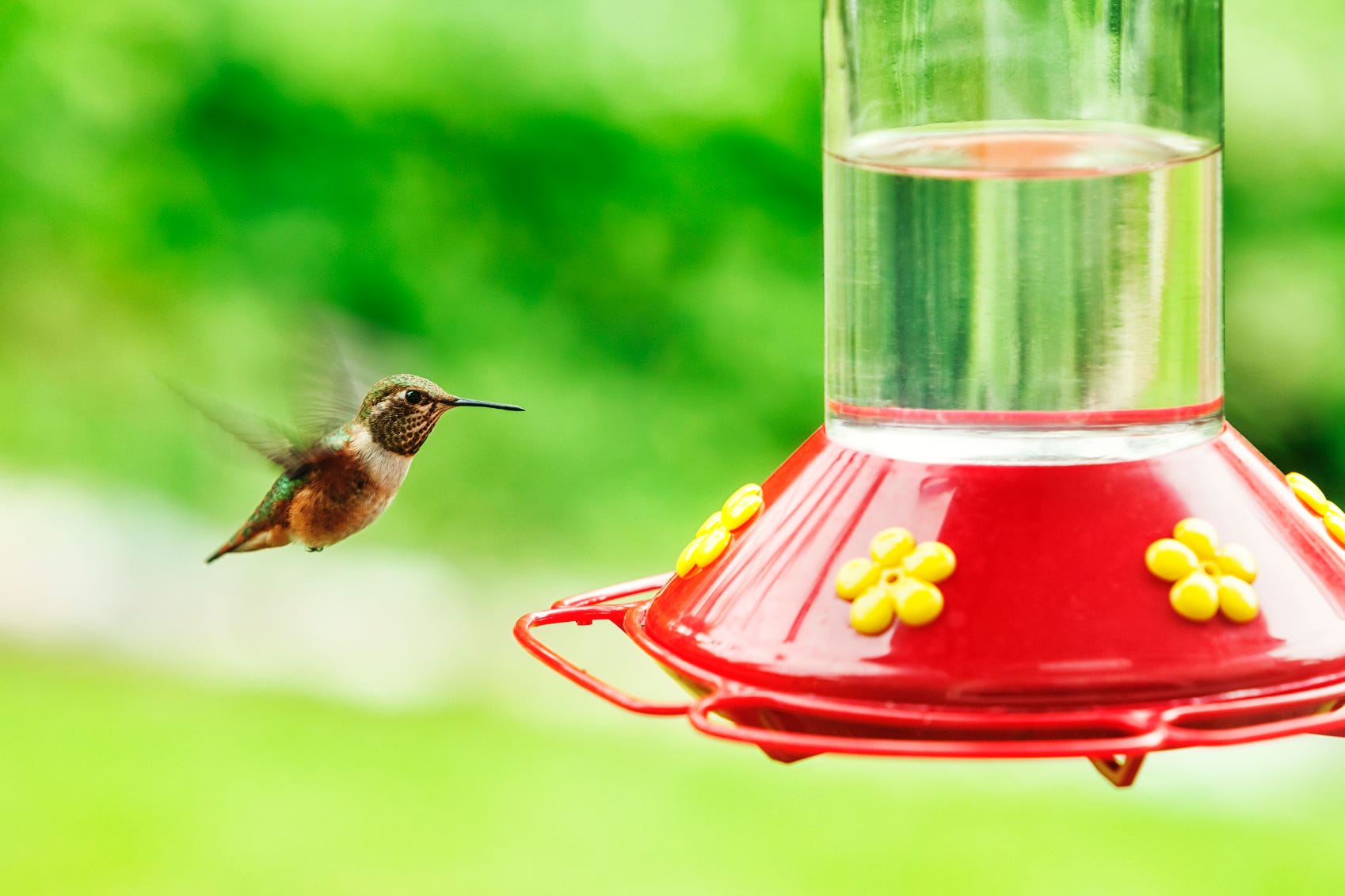
BONUS TIP: Don’t let good nectar go bad
We hear this concern a lot at Perky-PetⓇ : “I never get any hummingbirds. What am I doing wrong?” And they often wonder if the feeder isn’t in the right place. But we know better. The first thing we ask after getting that sort of complaint is, “When was the last time you changed the bottle of hummingbird mix?”
The answer, all too often, is: “It’s not empty, so why would I change it?”
Well, there’s your problem! Hummingbird nectar can spoil or ferment, meaning hummingbirds will try it once or twice, but then it goes bad and they may never come back. You must change your feeder’s nectar, even if it looks like it hasn’t lost a drop, on a regular basis. During hot weather, change it every two days. In milder weather, once a week is fine. To make that chore easier, we offer Top-Fill Hummingbird Feeders that make it easier than ever before to empty, clean, and refill your feeder so it's back up and attracting hummers in no time!
To further protect your hummingbird food from going bad, you’ll want to put your feeder in a place that gets a mix of sun and shade throughout the day. If the sun is too intense, the nectar can heat up and spoil or ferment in just a few hours.
That being said, keeping a feeder completely in the shade isn’t ideal either. When you do that, it will be harder for you to see your visitors’ iridescent colors. You definitely don’t want to miss out on that!






